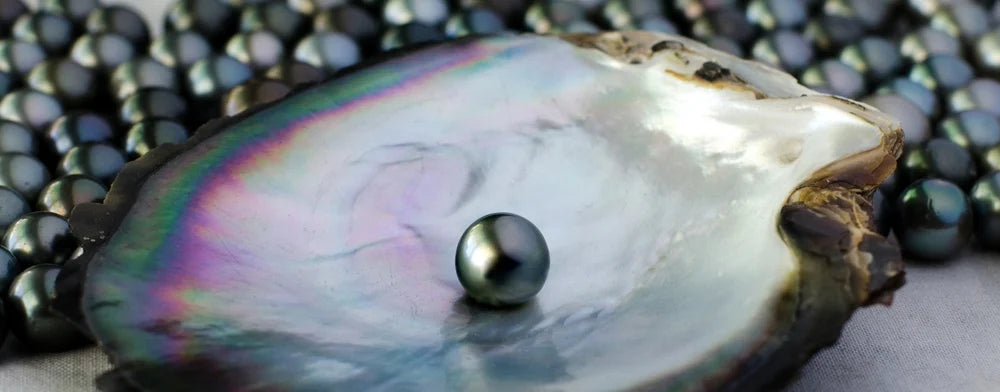
THE GROWTH OF PEARLS
THE FIRST STUDY ON PEARL GROWTH
Professor Raphael Dubois was the first to conduct an in-depth study of pearl growth. Through classical observations made with an optical microscope and the use of dyes to analyze organic components, he also conducted histological research on the pearl sacs where natural pearls are formed .
He highlighted the crucial role of organic conchiolin deposition in pearl formation. Moreover, he was the first to suggest that this organic deposit plays a fundamental role in the orientation of the mineral structure of pearls.
Professor Dubois summed up this discovery with an eloquent metaphor: "The construction of mother-of-pearl, like that of a pearl, requires two workers of different trades, a carpenter and a mason."
THE ROLE OF CONCHIOLIN
Conchiolin is the framework of the pearl. It determines the final shape of the pearl while ensuring the maintenance of the calcium carbonate crystals, which form the mineral structure.
This organic matter is also essential for strongly retaining water molecules, giving the pearl a unique coherence. For example, a pearl must be heated to 120 °C for an hour for the water it contains to dissipate. However, pearls with a heterogeneous composition allow water to evaporate more quickly, making them more vulnerable to deterioration over time.
THE STRENGTH AND ELASTICITY OF PEARLS
The conchiolin layer also contributes to the strength of the pearls by giving them a certain elasticity, which allows them to absorb shocks.
An anecdote related by Professor Dubois illustrates this characteristic: during a reception at the castle of Racconigi, where he was invited by the King of Italy, the Queen wanted to show him her magnificent pearl necklace up close. Unfortunately, the thread of the necklace broke, and the pearls scattered on the ground, performing what the professor described as a real "pearl dance", bouncing happily before rolling in all directions.
With the Belyness necklaces , such a mishap is inconceivable. We use a stainless steel cable composed of 49 twisted strands, covered with a nylon sheath. This innovative material combines flexibility and robustness, ensuring that each pearl remains perfectly in place. With Belyness, you can wear your jewelry with complete peace of mind, without ever fearing a "pearl dance".
THE FORMATION OF PEARLS ACCORDING TO JEAN-PIERRE GAUTHIER
The initial deposit in the formation of a pearl is always composed of conchiolin. This theory, initially demonstrated by Professor Dubois, was confirmed by Professor Jean-Pierre Gauthier, who continued this research in the academic field.
In his work, Professor Gauthier highlighted the concentric zones of the nacre layers that form around an organic core that he calls the "initiating center." These successive layers, visible under an electron microscope, reveal the complex structure of nacre, made of crystalline platelets and organic cement.
In one of his publications ( Australian Gemmologist , vol. 19, no. 10, 1997) he describes in detail pearls from Pinna nobilis , a splendid bivalve mollusc from the Mediterranean.
CALCITE AND ARAGONITE: THE COMPONENTS OF PEARLS
These pearls may be composed solely of calcite, which gives them an orange to red hue, or solely of pearly aragonite , which gives them a whiter color. Some pearls have a combination of both mineral forms, depending on their position in the animal's mantle.
In the case of calcite beads, a cross section reveals a fibrous structure radiating from the center. In contrast, mother-of-pearl beads grow by successive deposits of tabular aragonite crystals.
